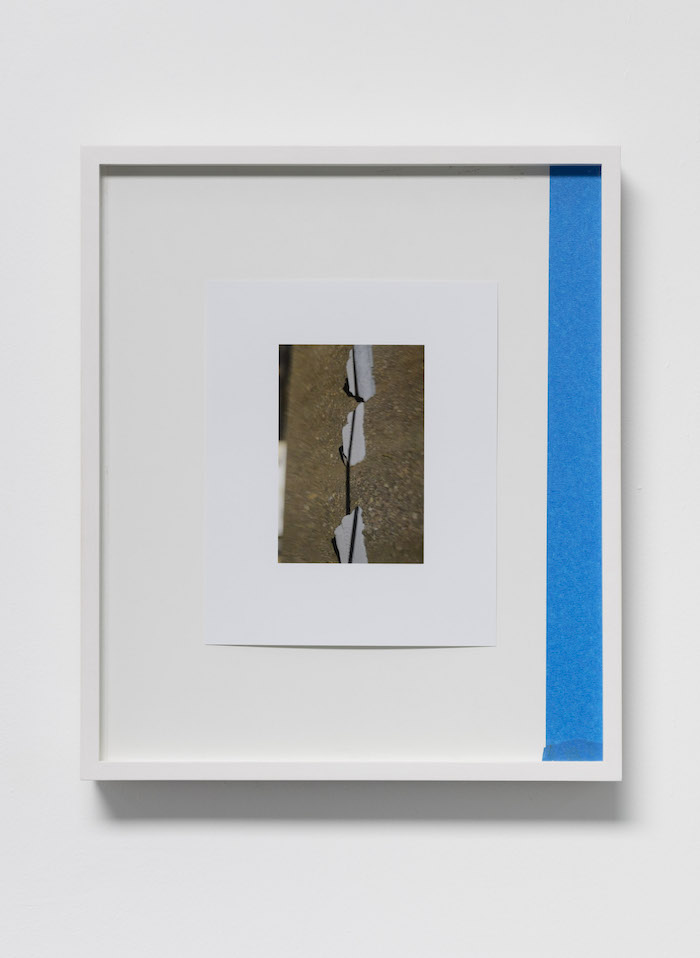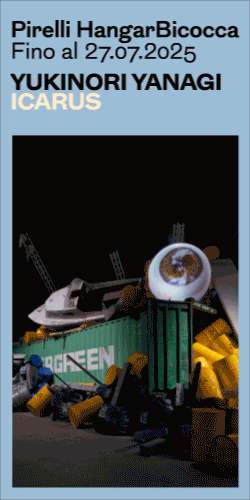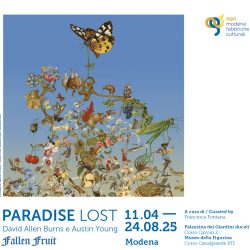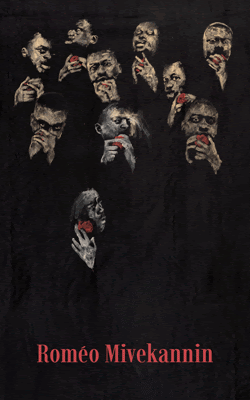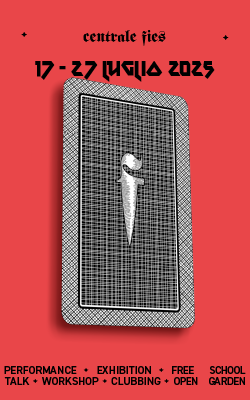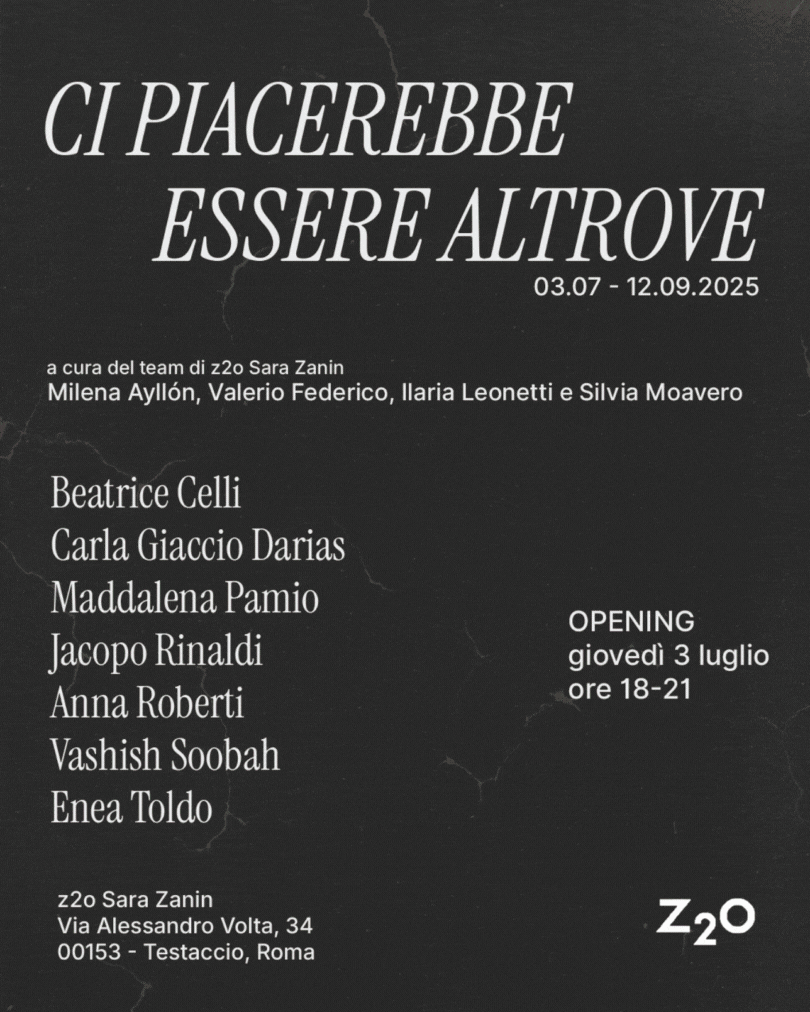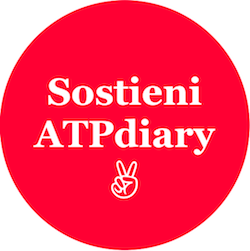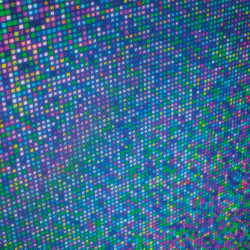[nemus_slider id=”67897″]
—
Segue testo in italiano —
Megan Plunkett at Emalin, London
Text by Gabriella Nugent
Three fragmented objects with the text for Toyota emblazoned on their side are propped up on gravel. They are connected by a disjunctive shadow. The photographs seem earthbound; we can’t see a skyline.
For her solo exhibition at London’s Emalin, the Los Angeles-based artist Megan Plunkett exhibits a new body of work entitled I Live by the River (2017). For the series, she photographed plaster casts of a disused Toyota car bumper in the Angeles National Forest and created a shadow that extends across the objects with a wooden stick. Four of the 15 photographs displayed in exhibition were taken at the scene, while the others are stills from a video of the original photographs slowly circulating on an ad hoc kinetic apparatus devised by the artist.
The series conveys the same scene in various ways – the three fragmented objects shift in colour, sharpness, and orientation. The photographs change in style from a kind of colourless veracity associated with crime scene photography to a more obscured appearance created through their circulation as objects and gravel slide across the surface of the photographs. Meanwhile, the colour photographs emphasise the yellow shades of the gravel. Blurred, one of the photographs where the cast appears whole comes to encompass an energy associated with city streets, as if capturing signs or construction sites from speeding cars.
I Live by the River explores the medium of photography. To cite the writer Teju Cole: ‘Images make us think of other images’.[1] No photograph stands alone, a sentiment echoed through Plunkett’s engagement with a seriality that challenges the totality of the singular work of art. Images exist simultaneously. Each photograph in the series is approached with the awareness of the other photographs – when we see colourlessness, we consider the colour version; when we see the obscured versions, we turn to the ones with clarity; and when we see the still photographs, they are compared to the ones captured in circulation.
Furthermore, the series exceeds its own seriality. The photographs are semantically contaminated through the visual economy of photography and its wider archive. I Live by the River opens onto other times and spaces. From the soft gray of Zoe Leonard’s photographs of the sun to the yellow of Harry Gruyaert’s photographs and the angle of Weegee’s crime scene shots. This stream of photographs and their connectedness is perhaps embodied in the disjunctive shadow that extends across the three fragmented objects. In this sense, a photograph is always embedded in a kind of seriality, echoed in the assembly of Toyota cars and the status of the cast in sculpture as challenging traditional conceptions of artistic expression.[2]
Working across photography and video, I Live by the River engages with the supposed stillness of photographs. Movement is emphasised in the exhibition space through the series’ sporadic arrangement, calling for the viewer to circulate in order to see the photographs. Furthermore, the way in which we conceive of photographs through other photographs complicates their conventional stillness. They extend with ease from one confined space and time to others. They are scenes that appear earthbound yet expand endlessly from their edges. This sense of ease and transience is seemingly in tension with the Toyota cast that appears concrete-like and weighted in appearance, acknowledging the contradictory stability of photographs and our eagerness to secure their significances.
The river cited in Plunkett’s title exists only in evocation: a stripe of cerulean tape appears alongside one of the photographs. However, we could say that the title comes to stand in for what Cole calls ‘a river of interconnected images wordlessly but fluently commenting on one another’.[3] Through the outward expansion of the photographs perhaps we will eventually end up ‘by the river’.
Bio: Gabriella Nugent is a PhD candidate in History of Art at University College London.
[1] Teju Cole, “A Photograph Never Stands Alone”, New York Times (14 March 2017) [accessed 22 July 2017].
[2] See Rosalind Krauss, Passages in Modern Sculpture (Cambridge, MA: MIT Press, 1977).
[3] Cole.


An Endless Stream of Photographs: “I Bet You Wish You Did and I Know I Do”
Megan Plunkett,
Text by Gabriella Nugent
Tre oggetti spezzati con il testo della Toyota inciso su un lato sono appoggiati sulla ghiaia. Sono connessi tra loro da un’ombra poco visibile. Le immagini nelle fotografie sembrano riprese molto in basso; non riusciamo a intravedere nessun profilo cittadino.
Per la sua mostra personale londinese da Emalin, l’artista Megan Plunkett, residente a Los Angeles, espone un nuovo corpus di lavori intitolato I Live by the River (2017). Per questa nuova serie ha fotografato stampi in cemento di un paraurti di una vecchia Toyota che ha ritrovato all’interno della Angeles National Forest e ha creato un’ombra che si estende tra gli oggetti attraverso l’uso di un bastone in legno. Quattro delle quindici fotografie in mostra sono state scattate sul posto, mentre le altre sono still dal video che riprende le fotografie originali in movimento su un meccanismo creato ad hoc dall’artista.
La serie di fotografie riporta la stessa scena in diversi modi – i tre oggetti frammentari cambiano per colore, nitidezza e orientamento. Le immagini differiscono nello stile, passando da una sorta di veracità in bianco e nero, associata alle fotografie sulle scene dei crimini, fino a un’atmosfera più oscura creata attraverso la movimentazione delle fotografie come fossero oggetti veri e propri e il passaggio di ghiaia sulla loro superficie. Le immagini a colori enfatizzano poi il tono giallo della ghiaia. Sfocato, nella fotografia in cui lo stampo appare per intero, esso sembra contenere un’energia associata alle strade cittadine, come ci riportano le fotografie di segni e cantieri riprese da auto in corsa.
I Live by the River esplora il medium fotografico. Per citare lo scrittore Teju Cole: “Le immagini ci fanno pensare ad altre immagini.”[1] Nessuna fotografia esiste in solitaria, un sentimento che riecheggia nell’impegno di Plunkett verso una serialità che sfida la totalità dell’opera d’arte singola. Le immagini esistono simultaneamente. Ogni fotografia della serie viene considerata attraverso la consapevolezza delle altre immagini – quando vediamo il bianco e nero pensiamo alla versione a colori; quando vediamo le versioni confuse, rivolgiamo il pensiero a quelle più nette; e quando vediamo fotografie immobili le compariamo con quelle catturate in movimento.
Inoltre, la serie eccede la sua stessa serialità. Le fotografie sono semanticamente contaminate attraverso l’economia visiva della fotografia e del suo più ampio archivio. I Live by the River apre ad altre nozioni di tempo e spazio. Dal grigio chiaro delle fotografie di Zoe Leonard al sole del giallo delle immagini di Harry Gruyaert all’angolo degli scatti di scene del crimine di Weegee. Questo flusso fotografico e le loro connessioni sono forse rappresentati nell’ombra frammentaria che si estende sui tre oggetti scomposti. In questo senso, una fotografia è sempre inserita in una sorta di serialità, echeggiata nel gruppo di auto Toyota e nello stato dello stampo come scultura, che sfida le concezioni tradizionali di espressione artistica.[2]
Lavorando tra fotografia e video, I Live by the River apre una discussione con la supposta immobilità della fotografia. Il movimento è enfatizzato, nello spazio espositivo, attraverso l’allestimento irregolare, che impone al visitatore la necessità di muoversi per poter vedere le immagini. Inoltre, il modo in cui noi concepiamo le immagini attraverso altre immagini complica l’idea dell’immobilità fotografica. Sono scene riprese dal basso ma che si espandono senza limiti dai loro stessi angoli. Questo senso di agio e labilità sembra essere in contrapposizione con lo stampo della Toyota che appare invece simile a cemento, dunque pesante, riconoscendo così la contraddittoria stabilità delle fotografie e la nostra decisione a rendere inequivocabile il loro valore.
Il fiume citato nel titolo esiste solo come evocazione: una striscia di nastro adesivo azzurro compare a fianco delle immagini. In ogni caso potremmo dire che il titolo sembra rappresentare ciò che Cole chiama “un fiume di immagini connesse che tra loro si commentano senza parole”.[3] Nell’espansione all’esterno delle fotografie potremmo, chissà, arrivare veramente “vicino al fiume”.
Bio: Gabriella Nugent è candidata al PhD in Storia dell’arte alla University College London.
Traduzione dall’inglese di Martina Odorici
[1] Teju Cole, “A Photograph Never Stands Alone”, New York Times (14 March 2017) [accessed 22 July 2017].
[2] Rosalind Krauss, Passages in Modern Sculpture (Cambridge, MA: MIT Press, 1977).
[3] Cole.
